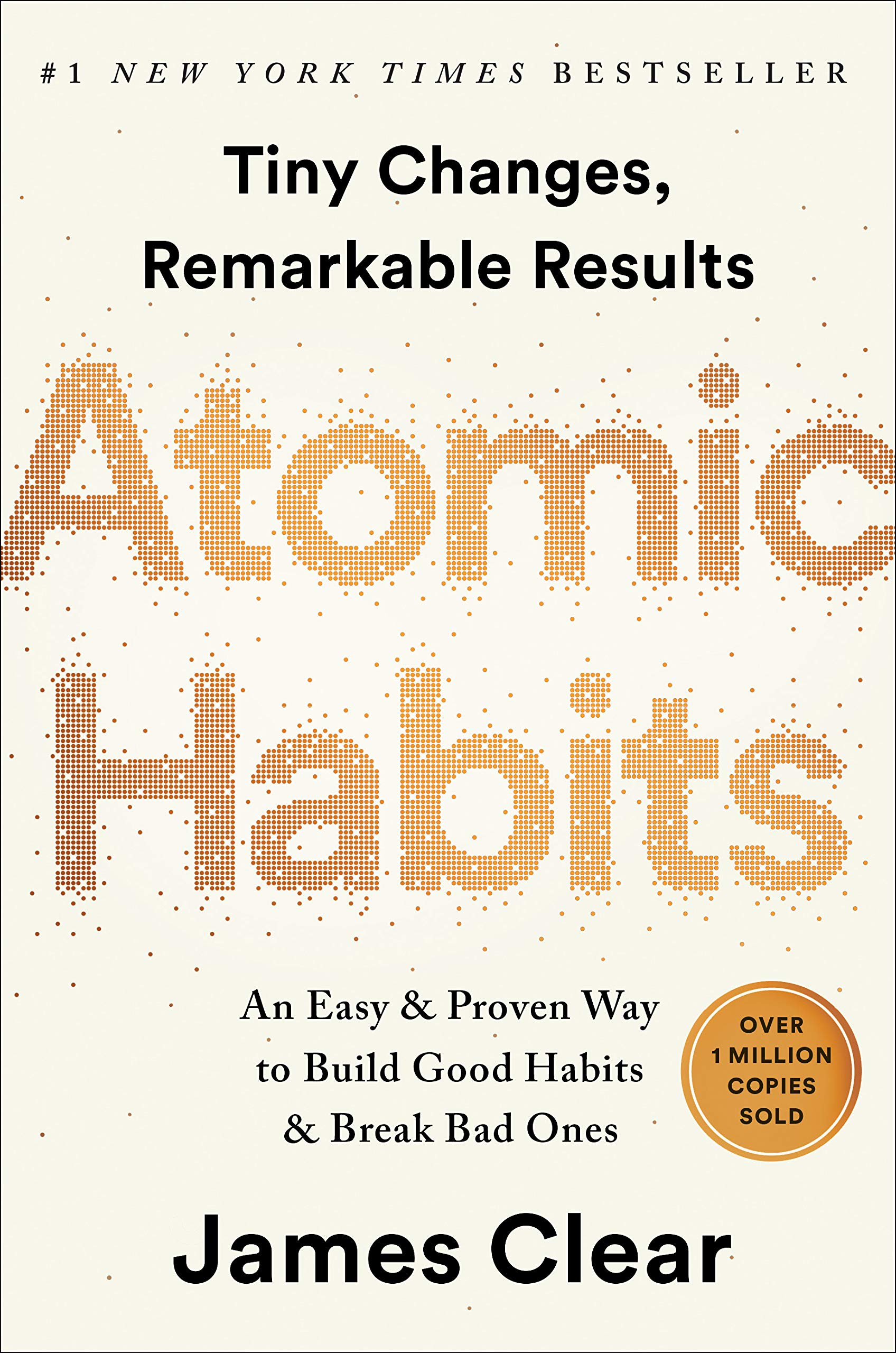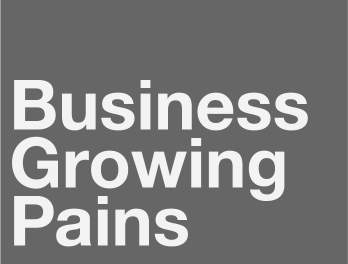
Andrew Brabant
Introduction
For years I wondered why when I was working on a project for the business, I would start with huge motivation and after a while, I noticed that my enthusiasm waned but I knew if I kept going that I would start to see results eventually.
This happened time and time again. Sometimes, it was just because the idea itself was less than optimal, but other times it was just that life got in the way, I ran out of time or wasn’t seeing the results as fast as I wanted them and a new brighter thing came along to distract me.
A couple of years ago when I was starting my training program, I felt that this issue that I was experiencing trying to turn my side hustle into a full time enterprise had to be one of the biggest causes of business growing pains that a founder or entrepreneur would face and so I decided to find a fix for my situation and hopefully others.
The more I looked into this, the clearer it became that this was not a new thing. I had heard of Stephen Covey’s book the 7 habits of highly effective people, but hadn’t read it. In the middle of reading ‘The One Thing’ by Gary Keller, He is talking about creating habits to ensure that you are not relying on motivation and energy to get your ‘one thing done’ and he mentions another author and Stamford Professor BJ Fogg’s book ‘Tiny Habits’, which I immediately, purchased on Audible.
The Tiny Habits theory was amazingly effective and got me started habit stacking and finding the right triggers and rewards to ensure that my productivity was SMASHING IT!. While Tiny Habits was good, it didn’t quite marry with my business focus and was quite general. I wanted something that was more hardcore business and had more of a framework around it that I could build upon. I continued searching Amazon and came across ‘Atomic Habits’ by James Clear.
What a foundational success book this is and should be for anyone that is looking to find a better way to get S**T done. Atomic Habits most importantly teaches habits as a system that you can use to structure and implement your necessary work.
James nails it and goes that bit further with identifying how our identity is the key to our habits and our habits are the key to our success and happiness. If every time you make a decision about doing a positive habit or neutral or negative habit, you ask yourself, “What would a successful / healthy / fit / good parent / do, you will overtime start to shift your identity to one of a healthy person a successful entrepreneur etc. He teaches how to activate those habits so they are daily habits.
The biggest truth is ‘The habits we create and maintain today become the results we see in the future. Exercise and eat healthily now and you will be fit and healthy in the future. The opposite is also true if you don’t exercise and eat junk food. Save money and invest today and do it regularly and at retirement you will have investments. Don’t do it and you won’t.
Success is the product of daily habits, not one time actions. Your outcomes are a lagging indicator of your eating, spending, saving and education. Time magnifies the margins between success and failure compounding results of what you did or didn’t do.
Why small habits have a huge impact on your life.
What determines whether we break through the tipping point that brings measurable change or success?
Forget about using goals to reach success. Goals and motivation are fleeting and hard to maintain as they require energy to achieve. Systems are the root of your achievement and habits are the vehicle that ensures that you become successful.
Entrepreneurs who have the right habits to ensure their profitability and staying power in the marketplace operate the world’s most profitable companies. The fact is that our everyday behaviors determine a great deal of our conduct, essentially deciding our ability to succeed in any line of work.
Some behaviors are beneficial in life, whereas others are beneficial in the company. Any business owner who is serious about achieving financial success must ensure that they practice the proper business habits. Bad habits in business will clearly kill you, damage your credibility, and eliminate any hope of eventual success. Good habits, on the other hand, when practiced consistently, can lead to massive success. Adding to this their personal habits for investment and health, you have a new compounding effect of happy in life and happy in business.
HOW TO ACHIEVE YOUR GOALS
WITHOUT RELYING ON MOTIVATION.
The issue is that we set a deadline but not a schedule.
We concentrate on the ultimate target and the time frame in which we want to accomplish it. We say things like, “By the summer, I want to lose 20 pounds,” or “In the next 12 weeks, I want to add 50 pounds to my bench press.”
Set a Schedule, Not a Deadline
In my experience, setting a timeline to work by rather than a deadline to meet is a better way to accomplish your objectives.
Instead of setting a deadline to reach a specific target (and then feeling like a failure if you don’t), pick a meaningful goal and create a plan to work toward it regularly. That may not seem to be a significant change, but it is. It’s kind of like working backward by asking yourself the question. What would I have to do everyday for the next 2 years to achieve goal x? When you have the answer, you then know what your daily schedule / habit needs to be.
For me, my ‘One Thing’ is to; write and publish one blog article every week. I worked out it takes me around 5 hours to write and 2 hours to publish the article on each of my sites. For this to occur, I need to do approximately an hour a day of focused work on my blogs.
I then put in place a habit stack of setting an alarm at 4:50am saying my mantra, opening my laptop, reading my Worklife Compass (Weekly, Monthly, Annual Goals) and then reviewing My ‘One Thing’ and once I have done that, I continue writing or publishing. And the job gets done!


1.: FOCUS ON THE PRACTICE, NOT THE PERFORMANCE
The odd thing is that it’s not about the success of top performers; it’s about the constant practice.
The focus is on taking action rather than completing X target by a certain date. Your schedule is your ally. You can’t predict when you’ll have a stroke of brilliance and write a moving tale, paint a stunning portrait, or create an exquisite painting, but the plan can ensure that you’re working when it happens.
You can’t predict when your body may want to set a new personal best, but the routine will ensure that you go to the gym regardless of how you feel.
It’s all about honing your craft, not about reaching a certain standard of performance. Give yourself a plan to execute, not a deadline to meet, if you want to be the kind of person who accomplishes tasks on a regular basis.

2.: SUCCESS HABITS
Let’s say you get a $10,000 increase at work and have $10,000 more per year in your wallet. Rather than saving money and continuing to live as normal, you’re more likely to move to a bigger TV, stay in better hotels, or buy designer clothes. Your normal lifestyle will gradually creep in, and goods that were once considered a luxury will become a necessity. What was previously unattainable would become the new standard.
3.: HOW TO USE HABIT CREEP TO YOUR ADVANTAGE
Similarly, habit creep isn’t when you adopt many new habits that you can’t keep up with. To put it another way, the trick is to avoid falling into the pit of trying to expand too quickly. Lifestyle creep is almost invisible because it occurs very slowly. The same should be said for habit creep. Your aim is to nudge your habits in the right direction gently.
There are three main methods for permanently changing long-term habits and improving efficiency.

4: INCREASING YOUR PERFORMANCE
On the other hand, the habit creep method will apply a very small amount to your usual way. Instead of 8,000 steps a day, say 8,100. This logic can be applied to almost every aspect of life. You make a certain number of sales calls each day at work, write a certain number of Thank You notes each year, and read a certain number of books each month. Suppose you want to become more competitive, thankful, or intelligent. In that case, you can use the concept of habit creep to gradually develop certain qualities by simply changing how you go about your daily routine.
4.2: CHANGING YOUR ENVIRONMENT
4.3: CHANGING YOUR NORMAL
That things, in my opinion, should be forgotten. Simply change the day-to-day activities, and the results will follow. We naturally create long-term changes in our lives by gradually altering our everyday habits and behaviors.

5: HOW LONG DOES IT TAKE?
Phillippa Lally works at University College London as a clinical psychology researcher. Lally and her research team determine how long it takes to develop a habit in a report published in the European Journal of Social Psychology.
Throughout 12 weeks, the analysis looked at the behaviors of 96 individuals. For the next 12 weeks, each person chose a new habit and commented on whether or not they carried it out and how automatic it felt.
Easy activities like “drinking a glass of water with lunch” were chosen by others. Others chose more challenging activities, such as “running for 15 minutes until dinner.”
The researchers analyzed the data at the end of the 12 weeks to see how long it took each individual to go from beginning a new activity to doing it automatically.
5.1: WHAT IS THE SOLUTION?
To put it differently, if you want to set realistic standards, it will take you anywhere from two to eight months to integrate a new habit into your life, not just 21 days.
According to the researchers, “missing one opportunity to execute the action did not materially affect the habit-forming process.” It doesn’t matter if you make mistakes. It’s not an all-or-nothing situation when it comes to developing healthy behaviors.

5.2 FINDING INSPIRATION ALONG THE ROAD
- For starters, there’s no need to feel bad about yourself if you try something for a few weeks and it doesn’t last. It’s expected to take a lot longer! If you can’t learn a habit in 21 days, don’t be too hard on yourself. Learn to appreciate your 10-year period of silence. Accept the long, slow path to greatness and concentrate on getting your reps in.
- Second, you are not required to be flawless. If you make any mistake once or twice, it has no lasting effects on your behavior. Allow yourself to make mistakes and devise methods for quickly getting back on track.
- Third, following longer timelines will assist us in realizing that habit formation is a phase rather than an occurrence. With all of the “21 Days” hype, it’s tempting to think, “Oh, I’ll just do this, and it’ll be finished.” But routines aren’t like that. You must accept the procedure. You must make a commitment to the scheme.
Understanding this from the start makes it easier to control your goals and commit to making gradual, incremental changes rather than feeling pressured to do everything at once.
5.3 WHERE TO GO FROM HERE
How long it takes to develop a habit isn’t all that important. You must put in the effort regardless of whether it takes 50 days or 500 days. Starting with Day 1 is the only way to get to Day 500. So forget about the number and concentrate on the task at hand.
6. HOW TO MAKE HABITS STICK
A new habit can be caused in one of five different ways. If you understand each one, you’ll be able to choose the best one for the habit you’re working on. Below is the list of each habit cue.
THE HABIT LOOP
For habits to be successful. Meaning for them to stick and become a ongoing habit in your life, James Clear teaches in his system, that you need:
- The cue – To let you know when to start your habit
- The craving – The desire to do the habit for its long term benefits
- The Response – What action you take
- The Reward – The more rewarding your habit is good or bad, the more likely you are to maintain it.


7. THE CUE
Productivity example.
When you put your feet on the ground after your alarm goes off, you say your mantra ‘Today is going to be a great day!’ to release serotonin into your brain. When you have said your mantra walk to your computer and review your One Thing List. When you have reviewed your ‘One Thing’ for the day, work on it for the allotted time.
Health example:
When I walk in the door after work, I put on my running shoes and take the dog for a walk. On Sunday after I have done the grocery shopping, I prepare myself 5 snack boxes of raw vegetables, that I can take out of the fridge and put in my bag as I set off for work.
Financial example:
When I pay the weekly bills, I transfer $20, $50 or $100 into my investment account;
Making it easy.
With all of the examples above, you can make your action easier to ensure you do it. You can have your laptop on your nightstand so that you don’t have to get out of bed to take action. You can have your shoes and dog lead at the front door waiting for you, you can chop the vegetables at the same time as you are preparing Sunday dinner and you can setup an automatic bank transfer.
CUE 1. TIME
There are also less well-known ways that time influences our attitudes. If you pay attention, you might find that you mindlessly repeat such activities at various times during the day, such as going out for a snack at the same time every afternoon, taking a smoking break every morning, and so on.
If these behaviours become habitual, you should consider how you feel at this time of day. Your routines are always a reflection of how you feel. Are you bored? Perhaps your afternoon snacking is a way to break up the monotony of your day. Are you lonely? Perhaps your smoking break is an opportunity to socialize with coworkers. The argument is that if you understand why these patterns appear at the same time every day, finding a new habit to fill the gap becomes much easier. Bad behaviours are substituted rather than eradicated.


CUE 2. LOCATION
Place (i.e., environment) is, in my view, the most strong and underappreciated driver of mindless behaviors. Our habits and actions are frequently a reaction to the world in which we live. The well-known research on water vs. soft drink consumption is an example of how our surroundings can either encourage or discourage healthy habits.
On the other hand, location-based cues aren’t just things we respond to; they can also be things we make. According to several research studies conducted by Duke University’s David Neal and Wendy Wood, new behaviors are actually easier to perform in new places.
One theory proposes that we mentally associate behaviors with a specific venue. This means that all of the places you’re familiar with (your home, workplace, etc.) have already been allocated attitudes, habits, and routines. You must conquer the signals that your brain has already given to that region if you want to form new habits in these familiar locations. Meanwhile, starting a new habit in a new place is like starting over. There are no pre-existing causes to resolve.
CUE 3: PRECEDING EVENT
When it comes to cues that can help you form new habits, I find that preceding events are one of the most effective. If you’ve understood the idea of habit stacking, you can develop a variety of ways to connect new habits to previous events.
James Clear in his book refers to this as habit stacking.
Example. When I was scaling up my course design work and working a full time job and coaching on the side, I found it necessary to make sure my productivity habit was the most important of the day.
To achieve the course completion date, I made my production habit the most important item of the day and because of all my other commitments including family, sports, work, and coaching, I had to find a time that didn’t conflict with the work that I needed to do. The only time that I had the mental space and lack of conflict every day was 4:50am in the morning. This was an hour and 10 minutes before my wife expected an espresso coffee in bed.
My habit stacked on top of waking up, which I had to do every day. I was specific and low impact and when I completed it, there was a reward and it works like this:
- When my alarm goes off at 4:50am, I put my feet on the floor and say my morning mantra.
- When I have said my morning mantra, I walk to the desk on the way the bathroom and wake my MacBook.
- When I return from the bathroom, I login and open up my Worklife Compass and review the week.
- When I see what I have set for this week, I start work on it
- When I have done an hours work, I can have a fresh espresso coffee as my reward.


CONCLUSION
- Read a book on the theory behind creating good habits.
- Use a system that makes sense for you
- Don’t try and be clever, start one new habit at a time
- Sometimes there is a core habit that other habits will work well with
- Make the habit easy and rewarding to do.
- Make it rewarding, pay yourself or give yourself a bonus.
Related Articles
TOP 10 CAUSES OF BUSINESS GROWING PAINS
TOP 10 CAUSES OF BUSINESS GROWING PAINS 1. Lack of Product Market Fit - Product market fit is the relationship between your products and services and your market. It is the gauge the venture capitalists look at a prospective investment to see whether it has identified...
What is Product Market Fit & Why is it so Important?
creating a business strategy for your online business or bricks & mortar business should be similar evaluate plan and engage with experts. They can point out the holes in your strategy allowing you the room to develop it further.
How Do You Make Your Brand Resonate With Your Customers, So They Trust You And Want To Buy From You?
Developing an authentic story around your brand, builds trust with your ideal customer and allows them to see themselves as successful and the hero of their story.
Follow Us
Subscribe For Updates & Offers
Lorem ipsum dolor sit amet, consectetur adipiscing elit. Aenean scelerisque suscipit condimentum. Vestibulum in scelerisque eros. Fusce sed massa vel sem commodo.


